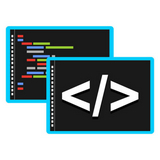Goroutine错误处理需通过channel传递或recover捕获panic,将错误转移至同步上下文处理。使用channel可将子Goroutine的错误发送给主Goroutine,结合select与超时机制实现安全接收;recover需在defer中调用以捕获panic,防止程序崩溃。为避免Goroutine泄漏,应确保channel被正确关闭,或使用context控制生命周期,通过cancel信号通知Goroutine退出。处理多个Goroutine错误时,可结合sync.WaitGroup等待完成,并用带缓冲的error channel收集所有错误。最佳实践包括:优先使用channel传递错误、合理使用recover、借助context管理生命周期、用WaitGroup协调结束、不忽略错误并做好日志记录,从而提升程序健壮性。

Goroutine 中发生的错误处理,核心在于:不能直接抛出或捕获,需要通过 channel 将错误传递出去,或者使用 recover
panic
解决方案
处理 Goroutine 中错误的关键在于理解 Goroutine 的并发特性。由于 Goroutine 独立运行,主 Goroutine 无法直接捕获子 Goroutine 中发生的错误。因此,我们需要一种机制将错误从子 Goroutine 传递到主 Goroutine 或其他负责处理错误的地方。
使用 Channel 传递错误:
立即学习“go语言免费学习笔记(深入)”;
这是最常见和推荐的方法。创建一个用于传递错误的 channel,子 Goroutine 在发生错误时将错误信息发送到该 channel。主 Goroutine 监听该 channel,一旦收到错误信息,就可以进行相应的处理。
package main
import (
"fmt"
"time"
)
func worker(id int, jobs <-chan int, results chan<- int, errChan chan<- error) {
for j := range jobs {
fmt.Println("worker", id, "processing job", j)
time.Sleep(time.Second)
if j == 5 { // 模拟错误
errChan <- fmt.Errorf("worker %d failed on job %d", id, j)
return // 终止 Goroutine
}
results <- j * 2
}
}
func main() {
jobs := make(chan int, 100)
results := make(chan int, 100)
errChan := make(chan error, 10) // 错误 channel
for w := 1; w <= 3; w++ {
go worker(w, jobs, results, errChan)
}
for j := 1; j <= 9; j++ {
jobs <- j
}
close(jobs)
go func() {
for a := range results {
fmt.Println("Result:", a)
}
}()
// 错误处理
select {
case err := <-errChan:
fmt.Println("Error:", err)
case <-time.After(3 * time.Second): // 超时处理
fmt.Println("No errors occurred within 3 seconds")
}
close(results)
time.Sleep(time.Second) // 等待结果输出完成
}在这个例子中,
errChan
worker
j == 5
errChan
select
errChan
使用 recover
panic
如果 Goroutine 发生了
panic
recover
recover
defer
package main
import (
"fmt"
"time"
)
func worker(id int) {
defer func() {
if r := recover(); r != nil {
fmt.Println("Recovered from panic:", r)
// 可以选择将错误信息发送到 channel,或者进行其他处理
}
}()
fmt.Println("worker", id, "starting")
time.Sleep(time.Second)
panic("Something went wrong in worker " + fmt.Sprintf("%d", id)) // 模拟 panic
fmt.Println("worker", id, "finished") // 这行代码不会执行
}
func main() {
go worker(1)
time.Sleep(2 * time.Second)
fmt.Println("Main function exiting")
}在这个例子中,
defer
worker
recover
worker
panic
recover
recover
defer
panic
如何避免 Goroutine 泄漏?
Goroutine 泄漏是指 Goroutine 启动后,由于某种原因无法正常退出,一直占用系统资源的情况。避免 Goroutine 泄漏的关键在于确保每个 Goroutine 最终都能退出。
确保所有 Channel 最终都会关闭:
如果 Goroutine 从 channel 读取数据,必须确保 channel 最终会被关闭,否则 Goroutine 可能会一直阻塞等待数据。通常,由发送方负责关闭 channel。
使用 context
context
context.WithCancel
cancel
Done()
package main
import (
"context"
"fmt"
"time"
)
func worker(ctx context.Context, id int) {
defer fmt.Println("worker", id, "exiting")
for {
select {
case <-ctx.Done():
fmt.Println("worker", id, "received cancel signal")
return
default:
fmt.Println("worker", id, "working")
time.Sleep(time.Second)
}
}
}
func main() {
ctx, cancel := context.WithCancel(context.Background())
go worker(ctx, 1)
time.Sleep(3 * time.Second)
cancel() // 发送取消信号
time.Sleep(time.Second)
fmt.Println("Main function exiting")
}在这个例子中,
cancel()
worker
如何优雅地处理多个 Goroutine 返回的错误?
当启动多个 Goroutine 并需要处理它们的错误时,可以使用
sync.WaitGroup
package main
import (
"fmt"
"sync"
"time"
)
func worker(id int, wg *sync.WaitGroup, errChan chan<- error) {
defer wg.Done()
fmt.Println("worker", id, "starting")
time.Sleep(time.Second)
if id == 2 {
errChan <- fmt.Errorf("worker %d failed", id)
return
}
fmt.Println("worker", id, "finished")
}
func main() {
var wg sync.WaitGroup
errChan := make(chan error, 3) // 假设启动 3 个 Goroutine
for i := 1; i <= 3; i++ {
wg.Add(1)
go worker(i, &wg, errChan)
}
wg.Wait() // 等待所有 Goroutine 完成
close(errChan)
for err := range errChan {
fmt.Println("Error:", err)
}
fmt.Println("Main function exiting")
}在这个例子中,
sync.WaitGroup
wg.Done()
wg.Wait()
Goroutine 错误处理的最佳实践是什么?
recover
panic
context
sync.WaitGroup
总而言之,Golang 并发编程中处理 Goroutine 错误需要细致的设计和严谨的实现。选择合适的错误处理方式,并结合
channel
recover
context
sync.WaitGroup

编程怎么学习?编程怎么入门?编程在哪学?编程怎么学才快?不用担心,这里为大家提供了编程速学教程(入门课程),有需要的小伙伴保存下载就能学习啦!

Copyright 2014-2025 https://www.php.cn/ All Rights Reserved | php.cn | 湘ICP备2023035733号